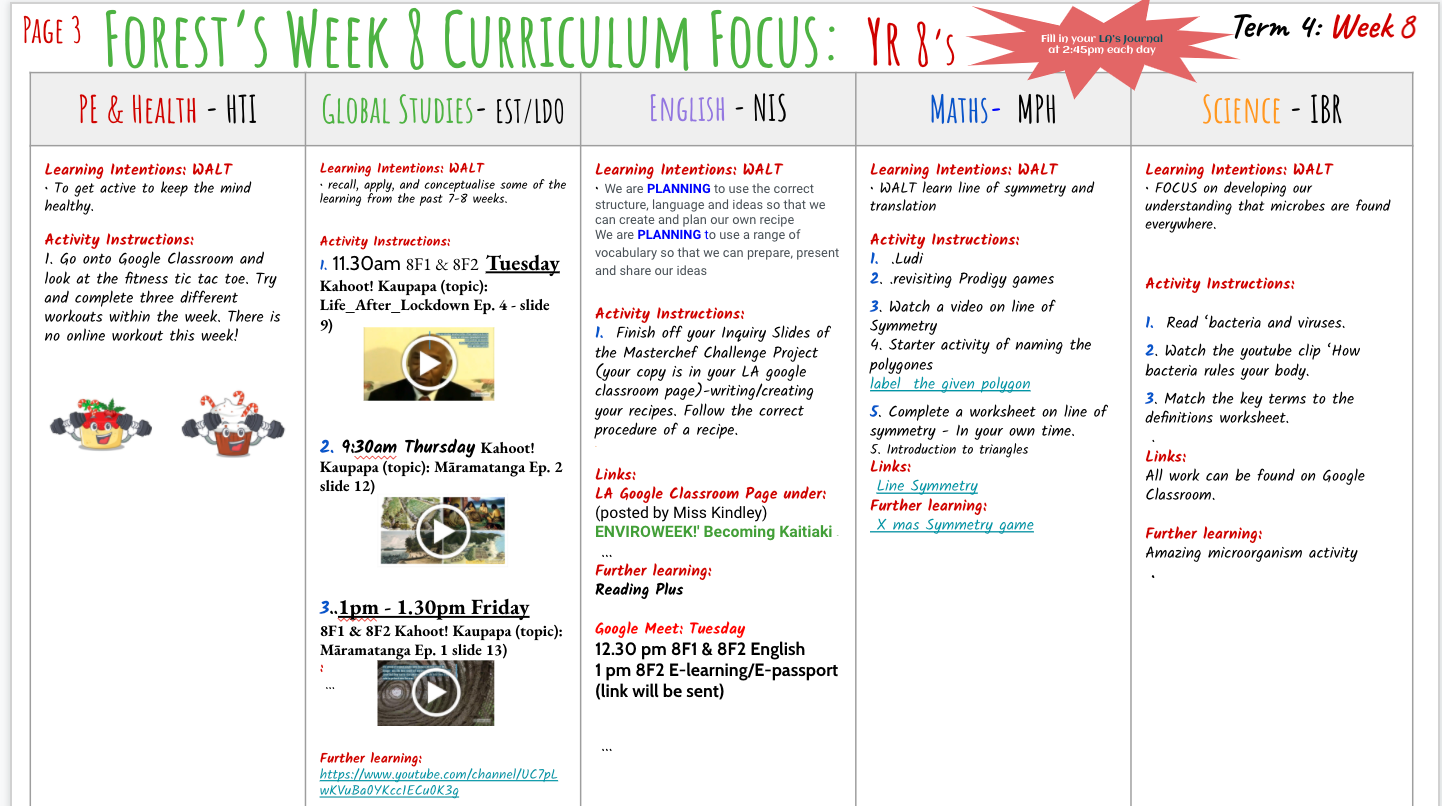8F2 Science
Section outline
-
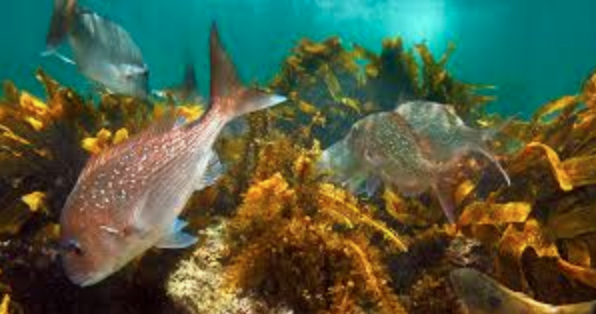


Kia ora 8F2! Welcome back to Term 1 for 2020. I hope you have had a great break and fun holiday and are ready to explore science! Below you will find this terms Achievement Objectives and the Learning Intention for the next few weeks. I have also outlined what will happen in each session of the week.
Big idea: ‘Te Taha Wairua’ - Connecting to the Goat Island marine environment
Achievement Objectives:
Living world
Students will:
Life processes
- Recognise that there are life processes common to all living things and that these occur in different ways.
Ecology
- Explain how living things are suited to their particular habitat and how they respond to environmental changes, both natural and human-induced.
Learning intention: We are learning to ...- Grow our knowledge and understanding of marine reserves, especially New Zealand
- Recognise the role of tangata whenua in marine conservation
- Understand the different habitats animal can live in
Success Criteria: I can ...
- Describe what a marine reserve is
- Understand that caring for our resources of the land and sea is important to our well being and survival
- Define the term habitat and give an example
Activities:
Lesson 1: First part: Work on your cover page in the book. You tube clip about marine reserves. Student and teacher discussion about students knowledge about marine reserves.
Lesson 2: Slide show "Protecting our marine world" and working through what we can do and what we cannot do in a marine reserve.
Lesson 3: Create a map and find all the marine reserves in New Zealand.
-



Kia ora 8F2! Welcome back to Term 1 for 2020. I hope you have had a great break and fun holiday and are ready to explore science! Below you will find this terms Achievement Objectives and the Learning Intention for the next few weeks. I have also outlined what will happen in each session of the week.
Big idea: ‘Te Taha Wairua’ - Connecting to the Goat Island marine environment
Achievement Objectives:
Living world
Students will:
Life processes
- Recognise that there are life processes common to all living things and that these occur in different ways.
Ecology
- Explain how living things are suited to their particular habitat and how they respond to environmental changes, both natural and human-induced.
EXPLORE / TŪHURA learning intentions:
- We are EXPLORING to grow our understanding of marine habitats and reserves, especially New Zealand
- We are EXPLORING to investigate the role of tangata whenua in marine conservation
- We are EXPLORING to research the different habitats animal can live in
Success Criteria: I can ...
- Describe what a marine reserve is
- Understand that caring for our resources of the land and sea is important to our well being and survival
- Define the term habitat and give an example
Activities:
Lesson 1: No school
Lesson 2: No school
Lesson 3: Marine reserves Powerpoint presentation. Google classroom Marine activity worksheet. In class look at different things from the ocean.
-


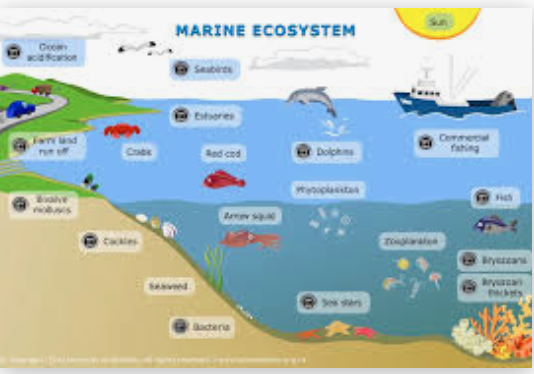
Kia ora 8F2! Welcome back to Term 1 for 2020. I hope you have had a great break and fun holiday and are ready to explore science! Below you will find this terms Achievement Objectives and the Learning Intention for the next few weeks. I have also outlined what will happen in each session of the week.
Big idea: ‘Te Taha Wairua’ - Connecting to the Goat Island marine environment
Achievement Objectives:
Living world
Students will:
Life processes
- Recognise that there are life processes common to all living things and that these occur in different ways.
Ecology
- Explain how living things are suited to their particular habitat and how they respond to environmental changes, both natural and human-induced.
EXPLORE / TŪHURA learning intentions:
- We are EXPLORING to grow our understanding of marine habitats and reserves, especially New Zealand
- We are EXPLORING to investigate the role of tangata whenua in marine conservation
- We are EXPLORING to research terminology associated with Ecology
- We are EXPLORING to distinguish between ecosystem, communities and populations
- We are EXPLORING to classify different ecosystems in New Zealand
- We are EXPLORING to investigate some of the animal species found in each ecosystem
Success Criteria: I can ...
- Describe what a marine reserve is
- Understand that caring for our resources of the land and sea is important to our well being and survival
- Define the term habitat and give an example
- Describe the difference between ecosystem, communities and population
- Research one marine animal and describe its habitat
Activities:
Lesson 1: Finish last weeks Google classroom task
Lesson 2: Powerpoint presentation on Ecology
Lesson 3: Compare different Ecosystems
Google Classroom activity
-

Welcome to online learning.
Please refer to Google Classroom for your tasks.
-



Kia ora 8F2! Welcome back to Term 1 for 2020. I hope you have had a great break and fun holiday and are ready to explore science! Below you will find this terms Achievement Objectives and the Learning Intention for the next few weeks. I have also outlined what will happen in each session of the week.
Big idea: ‘Te Taha Wairua’ - Connecting to the Goat Island marine environment
Achievement Objectives:
Living world
Students will:
Life processes
- Recognise that there are life processes common to all living things and that these occur in different ways.
Ecology
- Explain how living things are suited to their particular habitat and how they respond to environmental changes, both natural and human-induced.
EXPLORE / TŪHURA learning intentions:
- We are EXPLORING to grow our understanding of marine habitats and reserves, especially New Zealand
- We are EXPLORING to investigate the role of tangata whenua in marine conservation
- We are EXPLORING to research terminology associated with Ecology
- We are EXPLORING to distinguish between ecosystem, communities and populations
- We are EXPLORING to investigate some of the animal species found in each ecosystem
- We are EXPLORING to investigate the different stages of a food chain.
Success Criteria: I can ...
- Describe what a marine reserve is
- Understand that caring for our resources of the land and sea is important to our well being and survival
- Define the term habitat and give an example
- Describe the difference between ecosystem, communities and population
- Research one marine animal and describe its habitat
- Name the different stages of the food chain
Activities:
Lesson 1:
Finish coloring in your biome
Finish researching animals and plants presented in your chosen biome
Lesson 2:
Food chain PPP
Identify your plants and animals in your chosen biome as producers, herbivores, carnivores and omnivores
Lesson 3:Play food chain game
Practical "Mussels filtering seawater"
-



Kia ora 8F2! Welcome back to Term 1 for 2020. I hope you have had a great break and fun holiday and are ready to explore science! Below you will find this terms Achievement Objectives and the Learning Intention for the next few weeks. I have also outlined what will happen in each session of the week.
Big idea: ‘Te Taha Wairua’ - Connecting to the Goat Island marine environment
Achievement Objectives:
Living world
Students will:
Life processes
- Recognise that there are life processes common to all living things and that these occur in different ways.
Ecology
- Explain how living things are suited to their particular habitat and how they respond to environmental changes, both natural and human-induced.
FOCUS / ARONGA learning intentions:
- We are FOCUSING to define the term habitat and explain the habitats of a range of organisms
- We are FOCUSING to develop our understanding about food chains
- We are FOCUSING to compare the terms herbivores, omnivores, and carnivores
- We are FOCUSING to Identify different animals in a food web
Success Criteria: I can ...
- Describe what the term habitat means
- Name the different animal in a food chain
- Explain what a herbivore, omnivore, and carnivore is
- Create a food web.
Activities:
Lesson 1:
Goat Island trip
Lesson 2:
Science write up of the Goat Island trip
Lesson 3:
Marine habitats of New Zealand PPP and worksheets
-



Kia ora 8F2! Below you will find this terms Achievement Objectives and the Learning Intention for the next few weeks. I have also outlined what will happen in each session of the week.
Big idea: ‘Te Taha Wairua’ - Connecting to the Goat Island marine environment
Achievement Objectives:
Living world
Students will:
Life processes
- Recognise that there are life processes common to all living things and that these occur in different ways.
Ecology
- Explain how living things are suited to their particular habitat and how they respond to environmental changes, both natural and human-induced.
FOCUS / ARONGA learning intentions:
- We are FOCUSING to define the term habitat and explain the habitats of a range of organisms
- We are FOCUSING to develop our understanding about food chains
- We are FOCUSING to compare the terms herbivores, omnivores, and carnivores
- We are FOCUSING to Identify different animals in a food web.
- We are FOCUSING to understand how animals adapt to their environment
Success Criteria: I can ...
- Describe what the term habitat means
- Name the different animal in a food chain
- Explain what a herbivore, omnivore, and carnivore is
- Create a food web
- Describe how an animal can adapt to its environment with one example
Activities:
Lesson 1:
Practical:
Fish dissection and fill out questions related to it.
Lesson 2:
Make a food chain and determine the carnivore, and herbivore, and omnivores.
Google classroom tasks
Lesson 3:
Adaptations: Powerpoint presentation
Worksheet
Start designing your own unique animal
-


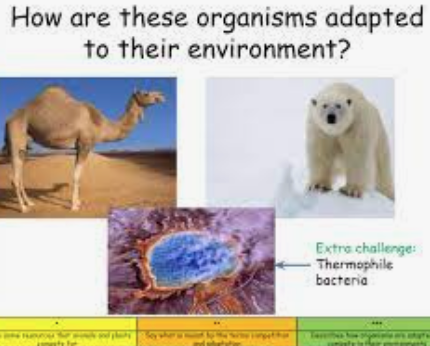

Kia ora 8F2! Below you will find this terms Achievement Objectives and the Learning Intention for the next few weeks. I have also outlined what will happen in each session of the week.
Big idea: ‘Te Taha Wairua’ - Connecting to the Goat Island marine environment
Achievement Objectives:
Living world
Students will:
Life processes
- Recognise that there are life processes common to all living things and that these occur in different ways.
Ecology
- Explain how living things are suited to their particular habitat and how they respond to environmental changes, both natural and human-induced.
FOCUS / ARONGA learning intentions:
- We are FOCUSING to define the term habitat and explain the habitats of a range of organisms
- We are FOCUSING to develop our understanding about food chains
- We are FOCUSING to compare the terms herbivores, omnivores, and carnivores
- We are FOCUSING to Identify different animals in a food web.
- We are FOCUSING to understand how animals adapt to their environment
Success Criteria: I can ...
- Describe what the term habitat means
- Name the different animal in a food chain
- Explain what a herbivore, omnivore, and carnivore is
- Create a food web
- Describe how an animal can adapt to its environment with one example
- Explain how adaptations help animals survive and thrive
Activities:
Lesson 1:
Chose a habitat and research plants and animals living in it.
Lesson 2:
Finish your research and work on your poster on your chosen food chain.
Lesson 3:
Finish your poster about your chosen food chain.
Homework
Education Perfect
-



Kia ora 8F2! Below you will find this terms Achievement Objectives and the Learning Intention for the next few weeks. I have also outlined what will happen in each session of the week.
Big idea: ‘Te Taha Wairua’ - Connecting to the Goat Island marine environment
Achievement Objectives:
Living world
Students will:
Life processes
- Recognise that there are life processes common to all living things and that these occur in different ways.
Ecology
- Explain how living things are suited to their particular habitat and how they respond to environmental changes, both natural and human-induced.
FOCUS / ARONGA learning intentions:
- We are FOCUSING to define the term habitat and explain the habitats of a range of organisms
- We are FOCUSING to develop our understanding about food chains
- We are FOCUSING to compare the terms herbivores, omnivores, and carnivores
- We are FOCUSING to Identify different animals in a food web.
- We are FOCUSING to understand how animals adapt to their environment
Success Criteria: I can ...
- Describe what the term habitat means
- Name the different animal in a food chain
- Explain what a herbivore, omnivore, and carnivore is
- Create a food web
- Describe how an animal can adapt to its environment with one example
- Explain how adaptations help animals survive and thrive
Activities:
Lesson 1:
Holiday
Lesson 2:
Watch "The Magic School Bus"
While you watch fill out the worksheet
Lesson 3:Adaptations: Powerpoint presentation - Structural, physiological and behavioral adaptations
Group task and create an animal
Homework
Education Perfect
-




Kia ora 8F2 students. This term our context is "Circus" and we will be exploring Physic through the lense of a Circus. Below you will find this terms Achievement Objectives and the Learning Intention for the next few weeks.Big Idea: “Circus”.
Achievement Objectives
Nature of science
Investigating in science
-
Build on prior experiences, working together to share and examine their own and others’ knowledge.
-
Ask questions, find evidence, explore simple models, and carry out appropriate investigations to develop simple explanations.
Physical world
Explore, describe, and represent patterns and trends for everyday examples of physical phenomena, such as movement, forces, electricity and magnetism, light, sound, waves, and heat. For example, identify and describe the effect of forces (contact and non-contact) on the motion of objects; identify and describe everyday examples of sources of energy, forms of energy, and energy transformations.
Learning Intentions: We are learning to (WALT)...
- exploring the concepts of force and motion
- Investigating balanced and unbalanced forces
- Understanding the Laws of motion
Success Criteria: I can/have..
- define or explain the following terms - Force, contact vs non contact forces, Newton's laws of motion, gravity, mass, weight, friction, buoyancy, thrust, air/water resistance
- Explain forces acting on a object, balanced and unbalanced forces, using diagrams
- Calculate distance, speed, force
All activities on Google Classroom
Lesson 1- Introduction to physics within a circus environment
Lesson 2- Teacher-led activities and discussion to understand forces
Lesson 3Practical - Forces investigation stations
Vocab:
- Force
- Squeezing
- Contact force
- Non-contact force
- Motion
- Inertia
- Stationary
- Motion
- Thrust
- Exerted
Homework:
All work not completed in class will be homework -
-




Kia ora 8F2 students. This term our context is "Circus" and we will be exploring Physic through the lense of a Circus. Below you will find this terms Achievement Objectives and the Learning Intention for the next few weeks.Big Idea: “Circus”.
Achievement Objectives
Nature of science
Investigating in science
-
Build on prior experiences, working together to share and examine their own and others’ knowledge.
-
Ask questions, find evidence, explore simple models, and carry out appropriate investigations to develop simple explanations.
Physical world
Explore, describe, and represent patterns and trends for everyday examples of physical phenomena, such as movement, forces, electricity and magnetism, light, sound, waves, and heat. For example, identify and describe the effect of forces (contact and non-contact) on the motion of objects; identify and describe everyday examples of sources of energy, forms of energy, and energy transformations.
Learning Intentions: We are learning to (WALT)...
- exploring the concepts of force and motion
- Investigating balanced and unbalanced forces
- Understanding the Laws of motion
Success Criteria: I can/have..
- define or explain the following terms - Force, contact vs non contact forces, Newton's laws of motion, gravity, mass, weight, friction, buoyancy, thrust, air/water resistance
- Explain forces acting on a object, balanced and unbalanced forces, using diagrams
- Calculate force
All activities on Google Classroom
Lesson 1
- Powerpoint presentation on forces
- Video explaining forces
- Worksheet
Lesson 2- Practical - Forces investigation stations
Lesson 3
Teacher only day
Vocab:
- Force
- Squeezing
- Contact force
- Non-contact force
- Motion
- Inertia
- Stationary
- Motion
- Thrust
- Exerted
Homework:
All work not completed in class will be homework
-
-




Kia ora 8F2 students. This term our context is "Circus" and we will be exploring Physic through the lense of a Circus. Below you will find this terms Achievement Objectives and the Learning Intention for the next few weeks.Big Idea: “Circus”.
Achievement Objectives
Nature of science
Investigating in science
-
Build on prior experiences, working together to share and examine their own and others’ knowledge.
-
Ask questions, find evidence, explore simple models, and carry out appropriate investigations to develop simple explanations.
Physical world
Explore, describe, and represent patterns and trends for everyday examples of physical phenomena, such as movement, forces, electricity and magnetism, light, sound, waves, and heat. For example, identify and describe the effect of forces (contact and non-contact) on the motion of objects; identify and describe everyday examples of sources of energy, forms of energy, and energy transformations.
Learning Intentions: We are learning to (WALT)...
- exploring the concepts of force and motion
- Investigating balanced and unbalanced forces
- Understanding the Laws of motion
Success Criteria: I can/have..
- define or explain the following terms - Force, contact vs non contact forces, Newton's laws of motion, gravity, mass, weight, friction, buoyancy, thrust, air/water resistance
- Explain forces acting on a object, balanced and unbalanced forces, using diagrams
- Calculate force
All activities on Google Classroom
Lesson 1
- Finish worksheet from last week
- Calculate forces
Lesson 2
- Brain-pop
Lesson 3
-
Practical
Vocab:
- Force
- Squeezing
- Contact force
- Non-contact force
- Motion
- Inertia
- Stationary
- Motion
- Thrust
- Exerted
Homework:
All work not completed in class will be homework
-
-

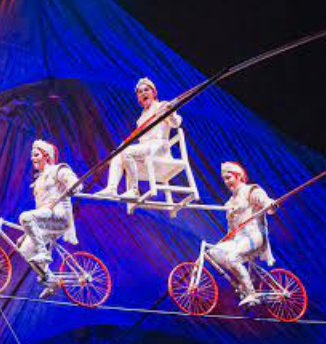


Kia ora 8F2 students. This term our context is "Circus" and we will be exploring Physic through the lense of a Circus. Below you will find this terms Achievement Objectives and the Learning Intention for the next few weeks.Big Idea: “Circus”.
Achievement Objectives
Nature of science
Investigating in science
-
Build on prior experiences, working together to share and examine their own and others’ knowledge.
-
Ask questions, find evidence, explore simple models, and carry out appropriate investigations to develop simple explanations.
Physical world
Explore, describe, and represent patterns and trends for everyday examples of physical phenomena, such as movement, forces, electricity and magnetism, light, sound, waves, and heat. For example, identify and describe the effect of forces (contact and non-contact) on the motion of objects; identify and describe everyday examples of sources of energy, forms of energy, and energy transformations.
EXPLORE / TŪHURA learning intentions:
- We are EXPLORING the concepts of force and motion
- We are EXPLORING to investigating balanced and unbalanced forces
- We are EXPLORING to investigate friction in everyday life
- We are EXPLORING to understanding the Laws of motion
Success Criteria: I can/have..
- define or explain the following terms - Force, contact vs non contact forces, Newton's laws of motion, gravity, mass, weight, friction, buoyancy, thrust, air/water resistance
- Explain forces acting on a object, balanced and unbalanced forces, using diagrams
- Calculate force
- Describe how to reduce and increase friction
All activities on Google Classroom
Lesson 1
- Introduction to friction
- Write a journal entry "The day friction disappeared"
Lesson 2
- Interactive website "Friction"
Lesson 3
-
Practical
Vocab:
- Force
- Squeezing
- Contact force
- Non-contact force
- Motion
- Inertia
- Stationary
- Motion
- Thrust
- Exerted
Homework:
All work not completed in class will be homework
-
-




Kia ora 8F2 students. This term our context is "Circus" and we will be exploring Physic through the eyes of a circus. Below you will find this terms Achievement Objectives and the Learning Intention for the next few weeks.Big Idea: “Circus”.
Achievement Objectives
Nature of science
Investigating in science
-
Build on prior experiences, working together to share and examine their own and others’ knowledge.
-
Ask questions, find evidence, explore simple models, and carry out appropriate investigations to develop simple explanations.
Physical world
Explore, describe, and represent patterns and trends for everyday examples of physical phenomena, such as movement, forces, electricity and magnetism, light, sound, waves, and heat. For example, identify and describe the effect of forces (contact and non-contact) on the motion of objects; identify and describe everyday examples of sources of energy, forms of energy, and energy transformations.
EXPLORE / TŪHURA learning intentions:
- We are EXPLORING the concepts of force and motion
- We are EXPLORING to investigating balanced and unbalanced forces
- We are EXPLORING to investigate friction in everyday life
- We are EXPLORING to understanding the Laws of motion
Success Criteria: I can/have..
- define or explain the following terms - Force, contact vs non contact forces, Newton's laws of motion, gravity, mass, weight, friction, buoyancy, thrust, air/water resistance
- Explain forces acting on a object, balanced and unbalanced forces, using diagrams
- Calculate force
- Describe how to reduce and increase friction
- Explain how a lever works
All activities on Google Classroom
Lesson 1
Went on a trip
Lesson 2
Introduction Powerpoint presentation on 'levers and the circus'
Practical on levers
Lesson 3
Introduce Newtons law of motionsVocab:
- Force
- Squeezing
- Contact force
- Non-contact force
- Motion
- Inertia
- Stationary
- Motion
- Thrust
- Exerted
Homework:
All work not completed in class will be homework
-
-




Kia ora 8F2 students. This term our context is "Circus" and we will be exploring Physic through the eyes of a circus. Below you will find this terms Achievement Objectives and the Learning Intention for the next few weeks.Big Idea: “Circus”.
Achievement Objectives
Nature of science
Investigating in science
-
Build on prior experiences, working together to share and examine their own and others’ knowledge.
-
Ask questions, find evidence, explore simple models, and carry out appropriate investigations to develop simple explanations.
Physical world
Explore, describe, and represent patterns and trends for everyday examples of physical phenomena, such as movement, forces, electricity and magnetism, light, sound, waves, and heat. For example, identify and describe the effect of forces (contact and non-contact) on the motion of objects; identify and describe everyday examples of sources of energy, forms of energy, and energy transformations.
EXPLORE / TŪHURA learning intentions:
- We are EXPLORING the concepts of force and motion
- We are EXPLORING to investigating balanced and unbalanced forces
- We are EXPLORING to investigate friction in everyday life
- We are EXPLORING to understanding the Laws of motion
Success Criteria: I can/have..
- Define or explain the following terms - Force, contact vs non contact forces, Newton's laws of motion, gravity, mass, weight, friction, buoyancy, thrust, air/water resistance
- Explain forces acting on a object, balanced and unbalanced forces, using diagrams
- Calculate force
- Describe how to reduce and increase friction
- Explain how a lever works
- Explain the term centripetal force and give an example from the circus
- Define inertia and give an example
All activities on Google Classroom
Lesson 1
Queens Birthday
Lesson 2
Introduction of centripetal force and how it can be used in the circus
Lesson 3
Newtons law of motions - InertiaIVocab:
- Force
- Squeezing
- Contact force
- Non-contact force
- Motion
- Inertia
- Stationary
- Motion
- Thrust
- Exerted
Homework:
All work not completed in class will be homework
-
-






Kia ora 8F2 students. This term our context is "Circus" and we will be exploring Physic through the eyes of a circus. Below you will find this terms Achievement Objectives and the Learning Intention for the next few weeks.
Big Idea: “Circus”.
Achievement Objectives
Nature of science
Investigating in science
-
Build on prior experiences, working together to share and examine their own and others’ knowledge.
-
Ask questions, find evidence, explore simple models, and carry out appropriate investigations to develop simple explanations.
Physical world
Explore, describe, and represent patterns and trends for everyday examples of physical phenomena, such as movement, forces, electricity and magnetism, light, sound, waves, and heat. For example, identify and describe the effect of forces (contact and non-contact) on the motion of objects; identify and describe everyday examples of sources of energy, forms of energy, and energy transformations
FOCUS / ARONGA learning intentions:
- We are FOCUSING on developing our knowledge of the creation of sound.
- We are FOCUSING on identifying the difference between amplitude and frequency.
- We are FOCUSING on describing the path sound takes throughout your ear.
SUCCESS CRITERIA
- Explain how sound is created.
- Describe the terms frequency and amplitude.
- Explain how sound travels through your ear.
All activities on Google Classroom
Lesson 1
Introduction of sound.Brain-pop - Sound worksheet
Lesson 2
"How sounds are heard"
Lesson 3
Practical - Different sounds
-
-


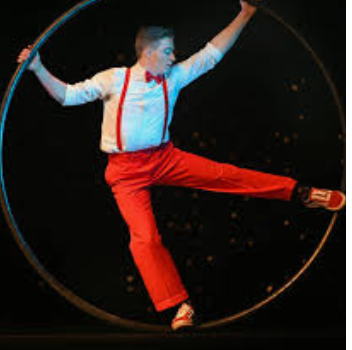



Kia ora 8F2 students. This term our context is "Circus" and we will be exploring Physic through the eyes of a circus. Below you will find this terms Achievement Objectives and the Learning Intention for the next few weeks.
Big Idea: “Circus”.
Achievement Objectives
Nature of science
Investigating in science
-
Build on prior experiences, working together to share and examine their own and others’ knowledge.
-
Ask questions, find evidence, explore simple models, and carry out appropriate investigations to develop simple explanations.
Physical world
Explore, describe, and represent patterns and trends for everyday examples of physical phenomena, such as movement, forces, electricity and magnetism, light, sound, waves, and heat. For example, identify and describe the effect of forces (contact and non-contact) on the motion of objects; identify and describe everyday examples of sources of energy, forms of energy, and energy transformations
FOCUS / ARONGA learning intentions:
- We are FOCUSING on developing our knowledge of the creation of sound.
- We are FOCUSING on identifying the difference between amplitude and frequency.
- We are FOCUSING on describing the path sound takes throughout your ear.
SUCCESS CRITERIA
- Explain how sound is created.
- Describe the terms frequency and amplitude.
- Explain how sound travels through your ear.
All activities on Google Classroom
Lesson 1
The ear - We are learning about the function of the ear and drawing the ear structure into our books.Keyword list in book
Lesson 2
PPP of the function of the ear
Brain-pop
BBC bitesizeLesson 3
Group task:
"Doctor, doctor". Students need to decide whats wrong with the patient with ear damage.
-
-



Kia ora 8F2 students. This term our context is "Circus" and we will be exploring Physic through the eyes of a circus. Below you will find this terms Achievement Objectives and the Learning Intention for the next few weeks.
Big Idea: “Circus”.
Achievement Objectives
Nature of science
Investigating in science
-
Build on prior experiences, working together to share and examine their own and others’ knowledge.
-
Ask questions, find evidence, explore simple models, and carry out appropriate investigations to develop simple explanations.
Physical world
Explore, describe, and represent patterns and trends for everyday examples of physical phenomena, such as movement, forces, electricity and magnetism, light, sound, waves, and heat. For example, identify and describe the effect of forces (contact and non-contact) on the motion of objects; identify and describe everyday examples of sources of energy, forms of energy, and energy transformations
FOCUS / ARONGA learning intentions:
- We are FOCUSING on investigating what light is
SUCCESS CRITERIA
- Define what light is
- Describe the difference between opaque, transparent, translucent
- Explain what a light wave is
All activities on Google Classroom
Lesson 1
Light PPP and worksheet
Lesson 2
Practical
Lesson 3
Brain pop
-
-



Kia ora 8F2 students. Hope you had a relaxing holidays. Below you will find this terms Achievement Objective and the Learning Intention.
Big Idea: OLYMPICS
ACHIEVEMENT OBJECTIVE
Living world Level 3/4
Life processes
Recognise that there are life processes common to all living things and that these occur in different ways.
Ecology
Explain how living things are suited to their particular habitat and how they respond to environmental changes, both natural and human induced.
EXPLORE / TŪHURA learning intentions:
- We are EXPLORING to understand the part Science plays in the Olympics
- We are EXPLORING to investigate the respiratory system
- We are EXPLORING to investigate structure of the brain
SUCCESS CRITERIA
-
I can name different aspects science plays in the olympics
-
I can describe the components of the respiratory system
-
I can define the structure of the airways, lungs and blood vessels
ACTIVITIES
See Google Classroom for all the activities.
Period 1
Design your cover page for the Term 3
Feedback on Assessment
Period 2
Brainstorm on how we think Olympics and Science is related.
Chose one part from the brainstorm and some research. Questions on Google Classroom
Period 3
Revisit MRS GREN
Discussion on what functions in your body are important to participate in the Olympics.
Homework
-



Kia ora 8F2 students. Hope you had a relaxing holidays. Below you will find this terms Achievement Objective and the Learning Intention.
Big Idea: OLYMPICS
ACHIEVEMENT OBJECTIVE
Living world Level 3/4
Life processes
Recognise that there are life processes common to all living things and that these occur in different ways.
Ecology
Explain how living things are suited to their particular habitat and how they respond to environmental changes, both natural and human induced.
EXPLORE / TŪHURA learning intentions:
- We are EXPLORING to understand the part Science plays in the Olympics
- We are EXPLORING to investigate the respiratory system
- We are EXPLORING to investigate structure of the brain
SUCCESS CRITERIA
-
I can name different aspects science plays in the olympics
-
I can describe the components of the respiratory system
-
I can define the structure of the airways, lungs and blood vessels
ACTIVITIES
See Google Classroom for all the activities.
Period 1
Powerpoint presentation on Respiratory System
Period 2
Key words on Quizlet
Worksheet
Period 3
Group work
Brainpop
Homework
-


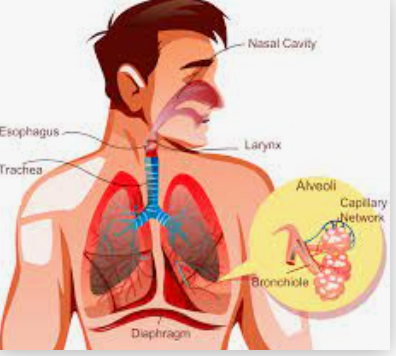
Kia ora 8F2 students. Hope you had a relaxing holidays. Below you will find this terms Achievement Objective and the Learning Intention.
Big Idea: OLYMPICS
ACHIEVEMENT OBJECTIVE
Living world Level 3/4
Life processes
Recognise that there are life processes common to all living things and that these occur in different ways.
Ecology
Explain how living things are suited to their particular habitat and how they respond to environmental changes, both natural and human induced.
EXPLORE / TŪHURA learning intentions:
- We are EXPLORING to understand the part Science plays in the Olympics
- We are EXPLORING to investigate the respiratory system
- We are EXPLORING to investigate structure of the brain
SUCCESS CRITERIA
-
I can name different aspects science plays in the olympics
-
I can describe the components of the respiratory system
-
I can define the structure of the airways, lungs and blood vessels
ACTIVITIES
See Google Classroom for all the activities.
Period 1
Powerpoint presentation: Inhalation, Exhalation and diffusion.
Discussion on the difference of breathing and respiration.
Period 2
Practical: Exercise and breathing rate.
Period 3
Circulatory system - The heart.
Homework
-



Kia ora 8F2 students. Hope you had a relaxing holidays. Below you will find this terms Achievement Objective and the Learning Intention.
Big Idea: OLYMPICS
ACHIEVEMENT OBJECTIVE
Living world Level 3/4
Life processes
Recognise that there are life processes common to all living things and that these occur in different ways.
Ecology
Explain how living things are suited to their particular habitat and how they respond to environmental changes, both natural and human induced.
EXPLORE / TŪHURA learning intentions:
- We are EXPLORING define terms related to the muscular system
- We are EXPLORING investigate the anatomy of muscles and how they're organized in the human body
- We are EXPLORING
understand the function of the muscular system
SUCCESS CRITERIA
-
I can define terms related to the muscular system
-
I can describe the main muscles for movement
-
I can describe the function of the muscular system
ACTIVITIES
See Google Classroom for all the activities.
Period 1
Powerpoint presentation: Muscles
Teacher led discussion on what muscles are mainly used for sports
Period 2
Youtube clip
Worksheet
Make your own muscles
Period 3
Practical: Dissection of a chicken leg
Homework
-
Kia ora 8F2 students
Hope you are all well and safe at home. I have copied the Year 7 Week 5 curriculum focos below for you to have a look at.
All the work for Science this week is on Google Classroom. If you have any questions please email me.

-
Kia ora 8F2
Hope everyone is well. All your work for Science this week is on Google Classroom. If you have any questions please email me.

-




Kia Ora Year 8 Students
See below for your instructions for this weeks online work. Go to Google Classroom and you will find detailed instructions. If anything is unclear or you need some help please email me.
Big Idea: OLYMPICS
ACHIEVEMENT OBJECTIVE
Living world Level 3/4
Life processes
Recognise that there are life processes common to all living things and that these occur in different ways.
Ecology
Explain how living things are suited to their particular habitat and how they respond to environmental changes, both natural and human induced.
Material world Level 3/4
Properties and changes of matter
- Group materials in different ways, based on the observations and measurements of the characteristic chemical and physical properties of a range of different materials.
FOCUS / ARONGA learning intentions:
- We are FOCUSING on developing our understanding between the difference of acids and bases.
SUCCESS CRITERIA
-
I can identify an acid and a base on the ph scale.
-
I can name different acids and bases found in the household.
ACTIVITIES
See Google Classroom for all the activities

-





Kia ora 8F2 students. Below you will find this terms Achievement Objective and the Learning Intention.
Big Idea: OLYMPICS
ACHIEVEMENT OBJECTIVE
Living world Level 3/4
Life processes
Recognise that there are life processes common to all living things and that these occur in different ways.
Ecology
Explain how living things are suited to their particular habitat and how they respond to environmental changes, both natural and human induced.
Material world Level 3/4
Properties and changes of matter
- Group materials in different ways, based on the observations and measurements of the characteristic chemical and physical properties of a range of different materials.
FOCUS / ARONGA learning intentions:
- We are FOCUSING on developing our understanding of different materials.
SUCCESS CRITERIA
I can list different materials.
I can describe the properties of different materials.
ACTIVITIES
See Google Classroom for all the activities

-

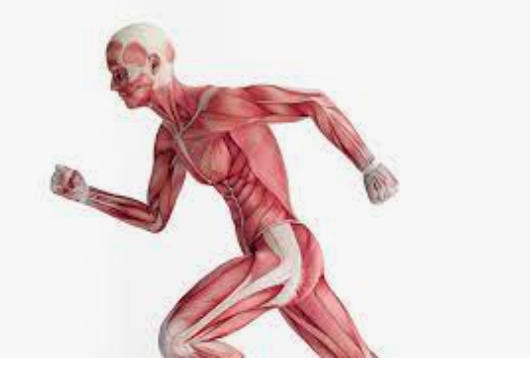



Kia ora 8F2 students. Below you will find this terms Achievement Objective and the Learning Intention.
Big Idea: OLYMPICS
ACHIEVEMENT OBJECTIVE
Living world Level 3/4
Life processes
Recognise that there are life processes common to all living things and that these occur in different ways.
Ecology
Explain how living things are suited to their particular habitat and how they respond to environmental changes, both natural and human induced.
Material world Level 3/4
Properties and changes of matter
- Group materials in different ways, based on the observations and measurements of the characteristic chemical and physical properties of a range of different materials.
FOCUS / ARONGA learning intentions:
- We are FOCUSING on developing our understanding of different materials.
SUCCESS CRITERIA
-
I can list different materials.
-
I can describe the properties of different materials.
-
I can describe the difference between a metal and a nonmetal.
ACTIVITIES
See Google Classroom for all the activities

-





Kia ora 8F2 students. Below you will find this terms Achievement Objective and the Learning Intention.
Big Idea: OLYMPICS
ACHIEVEMENT OBJECTIVE
Living world Level 3/4
Life processes
Recognise that there are life processes common to all living things and that these occur in different ways.
Ecology
Explain how living things are suited to their particular habitat and how they respond to environmental changes, both natural and human induced.
Material world Level 3/4
Properties and changes of matter
- Group materials in different ways, based on the observations and measurements of the characteristic chemical and physical properties of a range of different materials.
FOCUS / ARONGA learning intentions:
- We are FOCUSING on developing our understanding of different materials.
SUCCESS CRITERIA
-
I can list different materials.
-
I can describe the properties of different materials.
-
I can describe the difference between a metal and a nonmetal.
ACTIVITIES
See Google Classroom for all the activities

-






Kia ora 8F2 students. Below you will find this terms Achievement Objective a nd the Learning Intention.
Big Idea: OLYMPICS
ACHIEVEMENT OBJECTIVE
Material world Level 3/4
Properties and changes of matter
- Group materials in different ways, based on the observations and measurements of the characteristic chemical and physical properties of a range of different materials.
FOCUS / ARONGA learning intentions:
- We are FOCUSING on developing our understanding of different materials.
- We are FOCUSING on identifying the difference between a physical and chemical change.
SUCCESS CRITERIA
-
I can list different materials.
-
I can describe the properties of different materials.
-
I can describe the difference between a metal and a nonmetal.
-
I can distinguish between a physical and chemical change.
ACTIVITIES
See Google Classroom for all the activities

-



Kia ora 8F2 students. This week you will be working on your second assessment for this year. Assessment 2 is all about the Respiratory system.
TUESDAY: You need to attend the Google meet as I will be explaining your assessment. Google meet from 10.30 - 11 am on Tuesday. Click on the link on your Classroom page.
The assessment will be in two parts. Part 1 is an Education perfect test. Part 2 is to draw a scientific diagram. I will explain in detail at the Google meet and will put up the task document on MHOL. You will find it on Tuesday after the meet on this site below the slide with your weekly work.
Big Idea: OLYMPICS
ACHIEVEMENT OBJECTIVE
Living world Level 4
Life processes
Recognise that there are life processes common to all living things and that these occur in different ways.
PLAN & DO / WHAKAMAHI learning intentions:
- We are PLANNING to draw a scientific diagram so that we can show our understanding of the respiratory system through drawings and annotations.

-


Kia ora 8F2 students. Below you will find this terms Achievement Objective a nd the Learning Intention.
Big Idea: OLYMPICS
ACHIEVEMENT OBJECTIVE
Material world Level 3/4
Properties and changes of matter
- Group materials in different ways, based on the observations and measurements of the characteristic chemical and physical properties of a range of different materials.
FOCUS / ARONGA learning intentions:
- We are FOCUSING on identifying the difference between a physical and chemical change.
SUCCESS CRITERIA
-
I can distinguish between a physical and chemical change.
ACTIVITIES
See Google Classroom for all the activities

-



Kia ora 8F2 students. Below you will find this terms Achievement Objective a nd the Learning Intention.
Big Idea: Masterchef
ACHIEVEMENT OBJECTIVE
Material world Level 3/4
Properties and changes of matter
- Group materials in different ways, based on the observations and measurements of the characteristic chemical and physical properties of a range of different materials.
EXPLORE / TŪHURA learning intentions:
- We are EXPLORING to understand the reason for preserving food.
SUCCESS CRITERIA:
- Name different ways of preserving food.
ACTIVITIES
See Google Classroom for all the activities

-



Kia ora 8F2 students. Below you will find this terms Achievement Objective a nd the Learning Intention.
Big Idea: Masterchef
ACHIEVEMENT OBJECTIVE
Material world Level 3/4
Properties and changes of matter
- Group materials in different ways, based on the observations and measurements of the characteristic chemical and physical properties of a range of different materials.
EXPLORE / TŪHURA learning intentions:
- We are EXPLORING to understand the reason for preserving food.
SUCCESS CRITERIA:
- Name different ways of preserving food.
ACTIVITIES
See Google Classroom for all the activities

-

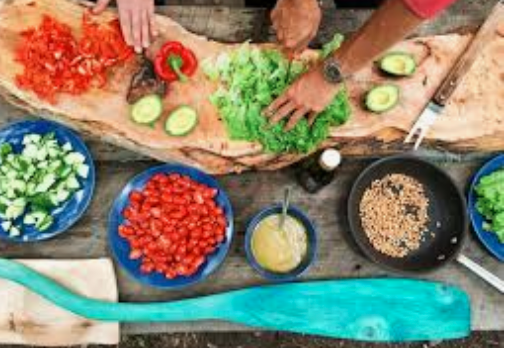

Kia ora 8F2 students. Below you will find this terms Achievement Objective a nd the Learning Intention.
Big Idea: Masterchef
ACHIEVEMENT OBJECTIVE
Material world Level 3/4
Properties and changes of matter
- Group materials in different ways, based on the observations and measurements of the characteristic chemical and physical properties of a range of different materials.
EXPLORE / TŪHURA learning intentions:
- We are EXPLORING to understand the reason for preserving food.
- We are EXPLORING
the process of pasteurization.
SUCCESS CRITERIA:
- Name different ways of preserving food
- explain why it is important to pasteurize milk.
ACTIVITIES
See Google Classroom for all the activities

-




Kia ora 8F2 students. Below you will find this terms Achievement Objective a nd the Learning Intention.
Big Idea: Masterchef
ACHIEVEMENT OBJECTIVE
Living world Level 4
Life processes
- Recognise that there are life processes common to all living things and that these occur in different ways.
FOCUS / ARONGA learning intentions:
- We are FOCUSING to identify that bacteria, viruses and fungi are three different types of microbes.
- We are FOCUSING to develop our understanding of the potential positive and negative roles bacteria play in our lives.
SUCCESS CRITERIA:
- Name the three different types of microbes.
- Name two positive and negative effects of microbes.
ACTIVITIES
See Google Classroom for all the activities

-



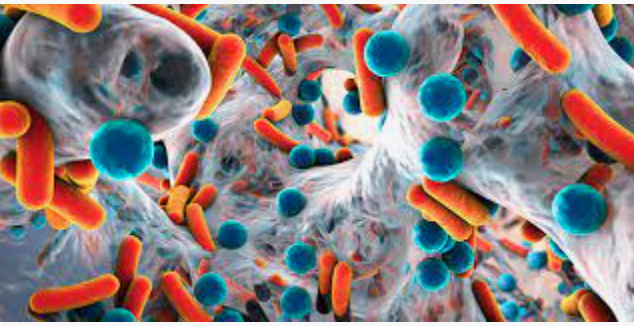
Kia ora 8F2 students. Below you will find this terms Achievement Objective a nd the Learning Intention.
Big Idea: Masterchef
ACHIEVEMENT OBJECTIVE
Living world Level 4
Life processes
- Recognise that there are life processes common to all living things and that these occur in different ways.
FOCUS / ARONGA learning intentions:
- We are FOCUSING to identify that bacteria, viruses and fungi are three different types of microbes.
- We are FOCUSING to develop our understanding of the potential positive and negative roles bacteria play in our lives.
SUCCESS CRITERIA:
- Name the three different types of microbes.
- Name two positive and negative effects of microbes.
ACTIVITIES
See Google Classroom for all the activities
